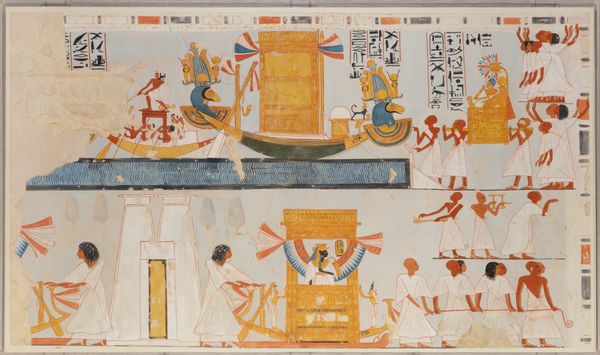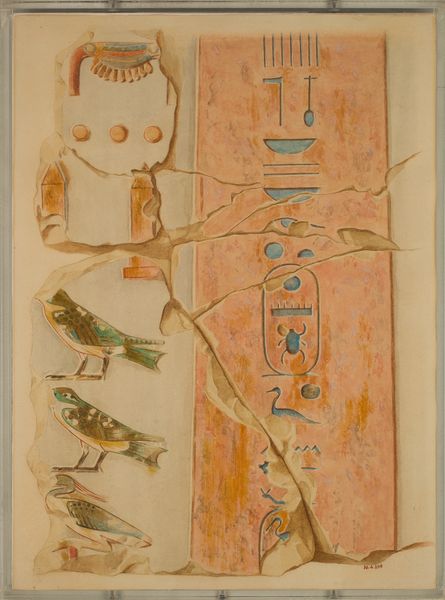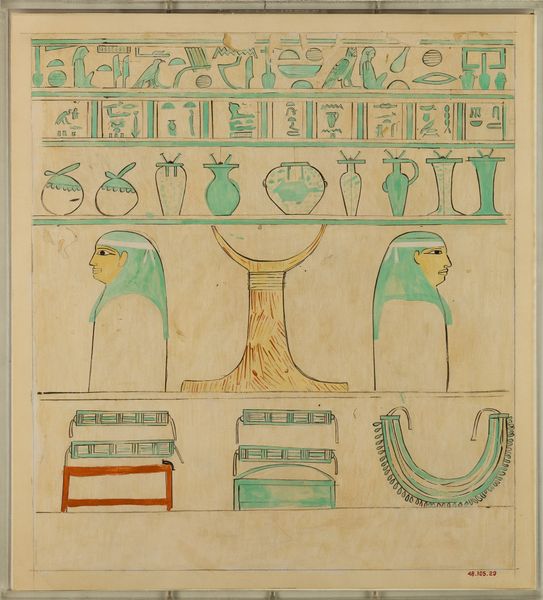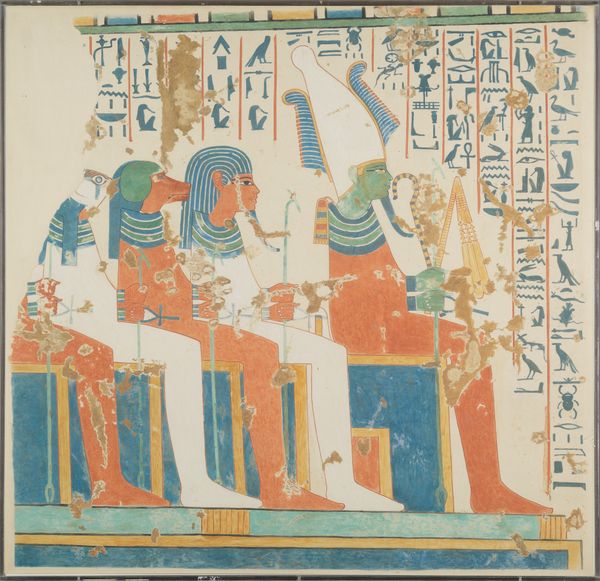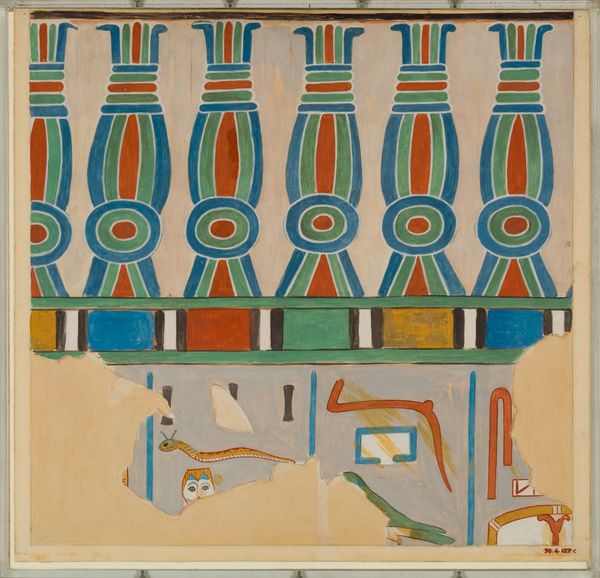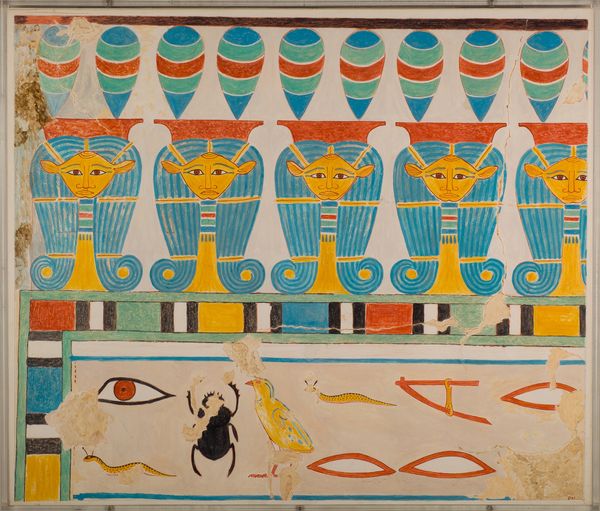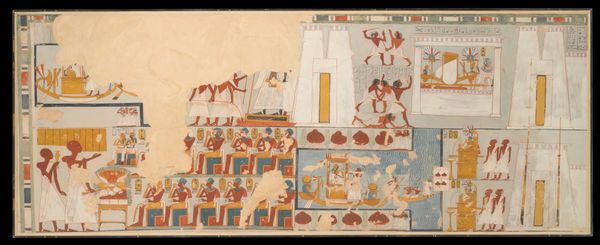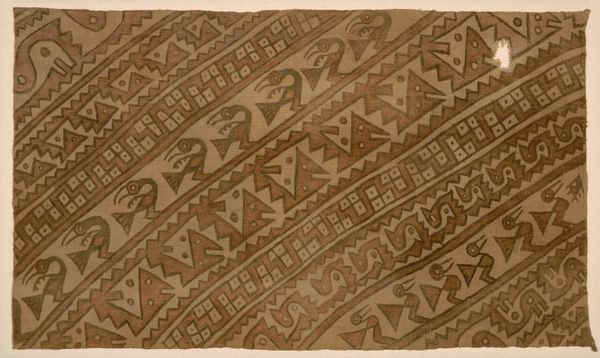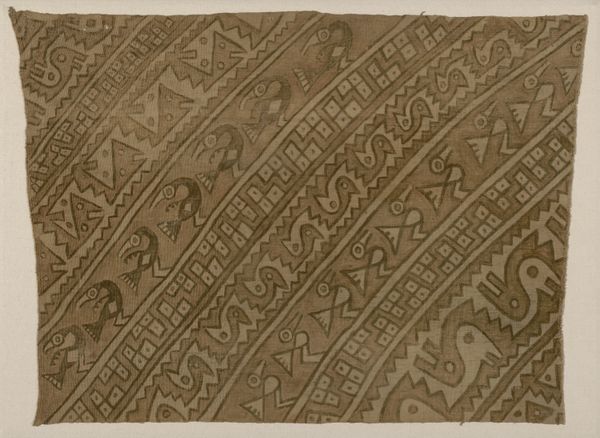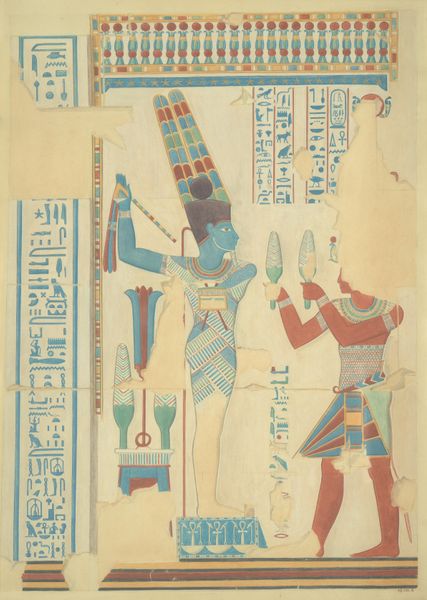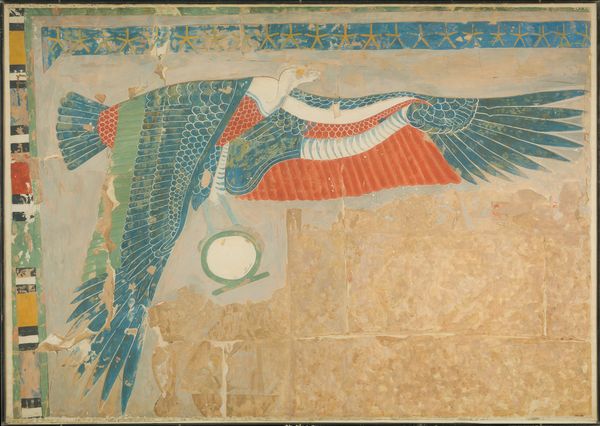
tempera, mural
#
tempera
#
ancient-egyptian-art
#
geometric pattern
#
tile art
#
abstract pattern
#
organic pattern
#
geometric
#
vertical pattern
#
abstraction
#
pattern repetition
#
mural
Dimensions: Facsimile H. 29 cm (11 7/16 in); w. 57 cm (22 7/16 in); scale 1:1; Framed H. 32.1 cm (12 5/8 in); w. 59.7 cm (23 1/2 in)
Copyright: Public Domain
Hugh R. Hopgood created this ceiling fragment facsimile, now at the Met, showcasing the potent symbols of ancient Egypt. Here we observe the lotus flower, a motif deeply entwined with themes of rebirth and regeneration, its symmetrical arrangement suggesting an eternal cycle. The lotus, springing from the muddy depths, blossoms towards the sun—a powerful metaphor resonating across millennia. We see echoes of this imagery in various cultures, from the sacred lotuses held by deities in Hindu art to their subtle appearances in Renaissance paintings. The hieroglyphs flanking the lotus pattern, originally sacred carvings, become stylized design elements. This transformation mirrors the cyclical nature of cultural symbols, where sacred meaning gradually evolves into ornamental form. Such transitions, influenced by collective memory and subconscious desires, highlight how deeply rooted symbols retain their emotional resonance even as their explicit meaning shifts over time.
Comments
No comments
Be the first to comment and join the conversation on the ultimate creative platform.
